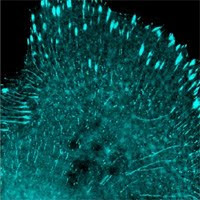The new product of the week of Sep 21-27 is the retrovirus plasmid sets that contain a built-in episomal expression system. As we have discussed previously, OriP/EBNA1 system originated from Epstein-Bar virus, which allows the establishment of stable episomes at 5-20 copies per cell, and duplication once per cell division.
By using the oriP/EBNA1 episomal system, reprogramming cDNAs can be expressed at prolonged time period in reference to plasmid transfection, without integration into chromosomal DNA. A paper published in PLoS One on Sep 18, 2009 by Marchetto et al. showed that by using such a system (on different plasmids) the authors were able to create induced pluripotent stems cells (iPS cells,) effectively from human embryo neural precursor cells.
The Allele pCHAC-EBNA system has dual functions: it can be ready-to-use plasmids for episomal expression of Oct4, Sox2, c-Myc, Klf4, or Nanog and Lin28 by a simple transfection into target cells; it can also be packaged into retroviruses by transfecting into the Allele Phoenix Retrovirus packaging Eco or Ampho cells. This product group is officially launched today. It should become a highly convenient and unique tool for iPSC-related studies.
Thursday, September 24, 2009
Retroviral Vectors with Integrated oriP/EBNA1 for IPSC
Subscribe to:
Post Comments (Atom)




No comments:
Post a Comment